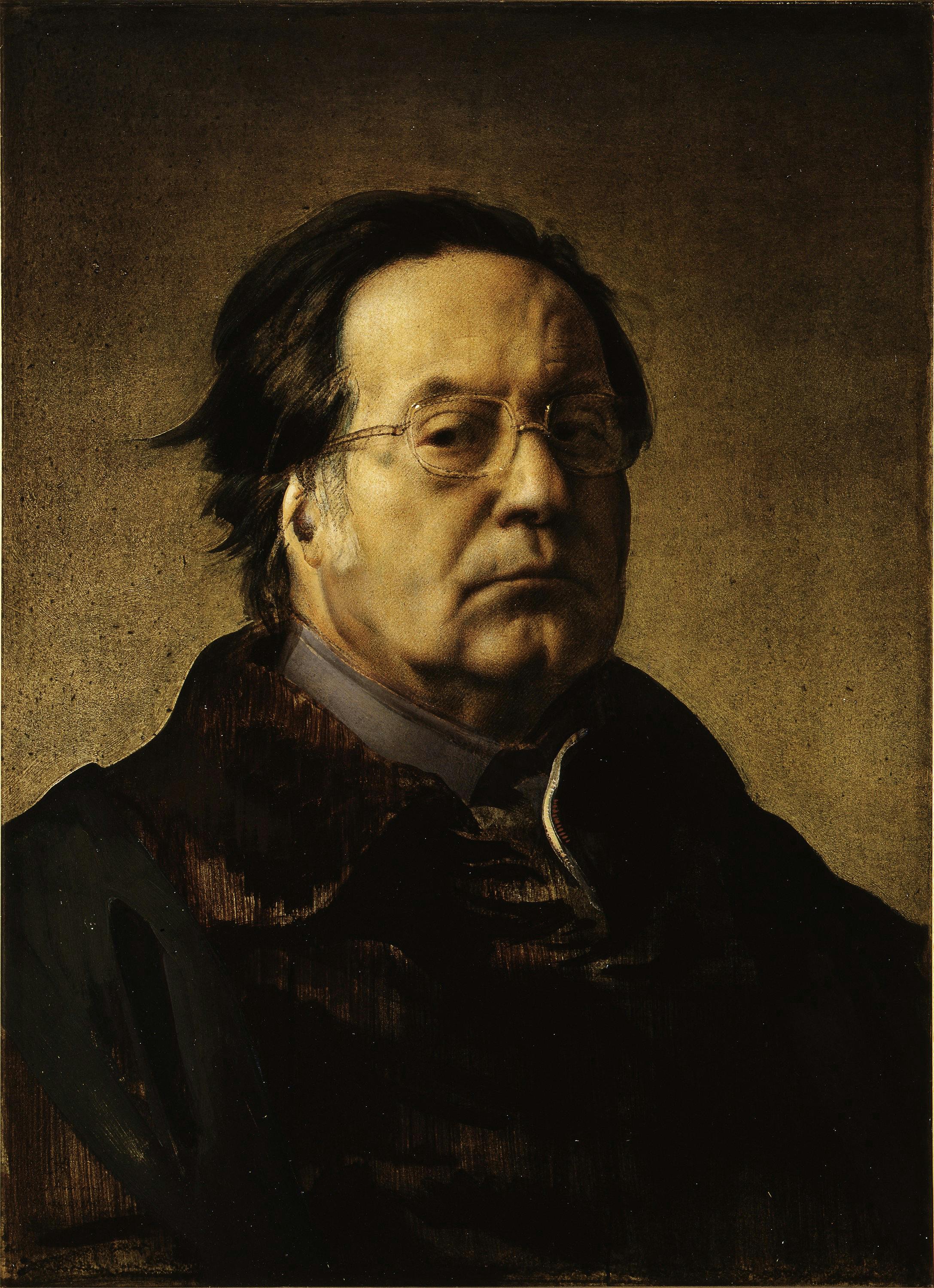Self-portrait
Pietro Annigoni (Milan 1910 - Florence 1988)
signed on the lower left: Pietro Annigoni - Florence LXXI
From his début in Florence in 1932, Pietro Annigoni set himself apart by a painting style that sought to achieve, in its rendering of reality, a less than easy synthesis between the great art tradition of the past and his contemporary tradition. With the group of the Pittori Moderni della Realtà, founded in Milan in 1947 with Gregorio Sciltian and brothers Antonio and Xavier Bueno, he put emphasis on the primacy of figurative painting, in stark contrast to abstract tendencies, underscoring the moral value of an art that, true to truth and nature, is able to speak to everyone. Continuing his research independently, after World War II, Annigoni achieved success in England, where he became the official painter of the royal family and was in great demand by an international and sophisticated clientele.
In the portraits, even in the most intimate ones of friends and family, the echoes of the past are combined with the ability to render the psychology and feeling of the subject depicted with great immediacy and depth. This self-portrait is added to the Uffizi Gallery’s collections in 1979 as a donation from American patron Chancey Stilmann. In the early 1970s, Annigoni had painted a cycle of frescoes alluding to the joy of living to decorate Stilmann’s home, Whethersfield Home, in Connecticut.
The painting is executed in the traditional tempera grassa technique on wood. The artist depicts himself in three-quarter view, illuminated sideways and wearing a brown painter’s jacket, pulled tight over his shirt. The bust is outlined with broad, rapid semi-finished brush strokes, to emphasise, in contrast and in carefully studied balance, the frank and precise depiction of the facial features. From the painting, the painter observes us with an enquiring gaze; a sudden flicker ruffles the tuft of hair at the nape of the neck, which escapes the composed pose: these details make the painting palpitating with contemporary life, even to this day.
G. Badino in G. Giusti e M. Sframeli, I volti dell'Arte. Autoritratti dalla Collezione degli Uffizi, Milano 2007, n. 58 pp. 184-185; F. Sborgi, in Uffizi Self-portrait Masterpieces, edited by V. Gavioli e A. Griffo, exhibition catalogue (Shanghai, Bund One Art Museum, 2022-2023; Pechino, National Museum of China 2023), n. 43 pp. 312-317.
